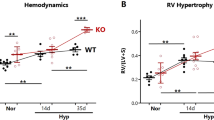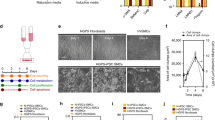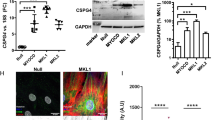Abstract
The precise molecular mechanisms underlying priapism associated with sickle cell disease remain to be defined. However, there is increasing evidence that upregulated activity of the opiorphin and adenosine pathways in corporal tissue, resulting in heighted relaxation of smooth muscle, have an important role in development of priapism. A key enzyme in the adenosine pathway is CD73, an ecto-5′-nucleotidase (5′-ribonucleotide phosphohydrolase; EC 3.1.3.5) which catalyzes the conversion of adenosine mononucleotides to adenosine. In the present study we investigated how sickle cell disease and hypoxia regulate the interplay between opiorphin and CD73. In the corpora of sickle cell mice we observed significantly elevated expression of both the mouse opiorphin homolog mSmr3a (14-fold) and CD73 (2.2-fold) relative to non-sickle cell controls at a life stage before the exhibition of priapism. Sickle cell disease has a pronounced hypoxic component, therefore we determined if CD73 was also modulated in in vitro corporal smooth muscle (CSM) models of hypoxia. Hypoxia significantly increased CD73 protein and mRNA expression by 1.5-fold and 2-fold, respectively. We previously demonstrated that expression of another component of the adenosine signaling pathway, the adensosine 2B receptor, can be regulated by sialorphin (the rat opiorphin homolologue), and we demonstrate that sialorphin also regulates CD73 expression in a dose- and time-dependent fashion. Using siRNA to knockdown sialorphin mRNA expression in CSM cells in vitro, we demonstrate that the hypoxic upregulation of CD73 is dependent on the upregulation of sialorphin. Overall, our data provide further evidence to support a role for opiorphin in CSM in regulating the cellular response to hypoxia or sickle cell disease by activating smooth muscle relaxant pathways.
This is a preview of subscription content, access via your institution
Access options
Subscribe to this journal
Receive 8 print issues and online access
$259.00 per year
only $32.38 per issue
Buy this article
- Purchase on Springer Link
- Instant access to full article PDF
Prices may be subject to local taxes which are calculated during checkout



Similar content being viewed by others
References
Emond AM, Holman R, Hayes RJ, Serjeant GR . Priapism and impotence in homozygous sickle cell disease. Arch Intern Med 1980; 140: 1434–1437.
Andersson KE . Erectile physiological and pathophysiological pathways involved in erectile dysfunction. J Urol 2003; 170: S6–S13.
Burnett AL, Lowenstein CJ, Bredt DS, Chang TS, Snyder SH . Nitric oxide: a physiologic mediator of penile erection. Science 1992; 257: 401–403.
Lagoda G, Sezen SF, Hurt KJ, Cabrini MR, Mohanty DK, Burnett AL . Sustained nitric oxide (NO)-releasing compound reverses dysregulated NO signal transduction in priapism. FASEB J 2013; 28: 76–84.
Dai Y, Zhang Y, Phatarpekar P, Mi T, Zhang H, Blackburn MR et al. Adenosine signaling, priapism and novel therapies. J Sex Med 2009; 6: 292–301.
Kanika ND, Tar M, Tong Y, Kuppam DS, Melman A, Davies KP . The mechanism of opiorphin-induced experimental priapism in rats involves activation of the polyamine synthetic pathway. Am J Physiol Cell Physiol 2009; 297: C916–C927.
Fu S, Tar MT, Melman A, Davies KP . Opiorphin is a master regulator of the hypoxic response in corporal smooth muscle cells. FASEB J 2014; 28: 3633–3644.
Takahashi Y, Ishii N, Lue TF, Tanagho EA . Effects of adenosine on canine penile erection. J Urol 1992; 148: 1323–1325.
Mi T, Abbasi S, Zhang H, Uray K, Chunn JL, Xia LW et al. Excess adenosine in murine penile erectile tissues contributes to priapism via A2B adenosine receptor signaling. J Clin Invest. 2008; 118: 1491–1501.
Ning C, Wen J, Zhang Y, Dai Y, Wang W, Zhang W et al. Excess adenosine A2B receptor signaling contributes to priapism through HIF-1alpha mediated reduction of PDE5 gene expression. FASEB J 2014; 28: 2725–2735.
Wen J, Dai Y, Zhang Y, Zhang W, Kellems RE, Xia Y . Impaired erectile function in CD73-deficient mice with reduced endogenous penile adenosine production. J Sex Med 2011; 8: 2172–2180.
User HM, Zelner DJ, McKenna KE, McVary KT . Microarray analysis and description of SMR1 gene in rat penis in a post-radical prostatectomy model of erectile dysfunction. J Urol 2003; 170: 298–301.
Tong Y, Tar M, Davelman F, Christ G, Melman A, Davies KP . Variable coding sequence protein A1 as a marker for erectile dysfunction. BJU Int 2006; 98: 396–401.
Tong Y, Tar M, Monrose V, DiSanto M, Melman A, Davies KP . hSMR3A as a marker for patients with erectile dysfunction. J Urol 2007; 178: 338–343.
Davies KP, Tar M, Rougeot C, Melman A . Sialorphin (the mature peptide product of Vcsa1) relaxes corporal smooth muscle tissue and increases erectile function in the ageing rat. BJU Int 2007; 99: 431–435.
Tong Y, Tiplitsky SI, Tar M, Melman A, Davies KP . Transcription of G-protein coupled receptors in corporeal smooth muscle is regulated by the endogenous neutral endopeptidase inhibitor sialorphin. J Urol 2008; 180: 760–766.
Yang YF, Chen Z, Hu SL, Hu J, Li B, Li JT et al. Interleukin-1 receptor associated kinases-1/4 inhibition protects against acute hypoxia/ischemia-induced neuronal injury in vivo and in vitro. Neuroscience 2011; 196: 25–34.
Goldberg MA, Schneider TJ . Similarities between the oxygen-sensing mechanisms regulating the expression of vascular endothelial growth factor and erythropoietin. J Biol Chem 1994; 269: 4355–4359.
Roemeling-van Rhijn M, Mensah FK, Korevaar SS, Leijs MJ, van Osch GJ, Ijzermans JN et al. Effects of hypoxia on the immunomodulatory properties of adipose tissue-derived mesenchymal stem cells. Front Immunol 2013; 4: 203.
Sun K, Xia Y . New insights into sickle cell disease: a disease of hypoxia. Curr Opin Hematol 2013; 20: 215–221.
Synnestvedt K, Furuta GT, Comerford KM, Louis N, Karhausen J, Eltzschig HK et al. Ecto-5'-nucleotidase (CD73) regulation by hypoxia-inducible factor-1 mediates permeability changes in intestinal epithelia. J Clin Invest 2002; 110: 993–1002.
Linden J . Molecular approach to adenosine receptors: receptor-mediated mechanisms of tissue protection. Annu Rev Pharmacol Toxicol 2001; 41: 775–787.
Nagaoka T, Sakamoto T, Mori F, Sato E, Yoshida A . The effect of nitric oxide on retinal blood flow during hypoxia in cats. Invest Ophthalmol Vis Sci 2002; 43: 3037–3044.
Segal S . Communication among endothelial and smooth muscle cells coordinates blood flow control during exercise. News Physiol Sci 1992; 7: 152–156.
Tager AM, LaCamera P, Shea BS, Campanella GS, Selman M, Zhao Z et al. The lysophosphatidic acid receptor LPA1 links pulmonary fibrosis to lung injury by mediating fibroblast recruitment and vascular leak. Nat Med 2008; 14: 45–54.
Fredholm BB, IJzerman AP, Jacobson KA, Klotz KN, Linden J . International Union of Pharmacology. XXV. Nomenclature and classification of adenosine receptors. Pharmacol Rev 2001; 53: 527–552.
Phatarpekar PV, Wen J, Xia Y . Role of adenosine signaling in penile erection and erectile disorders. J Sex Med 2010; 7: 3553–3564.
Acknowledgements
This work was supported by grants R01DK087872 from the NIH/NIDDK to Kelvin P Davies and Sexual Medicine Society of North America to Shibo Fu.
Author information
Authors and Affiliations
Corresponding author
Ethics declarations
Competing interests
The authors declare no conflict of interest.
Rights and permissions
About this article
Cite this article
Fu, S., Davies, K. Opiorphin-dependent upregulation of CD73 (a key enzyme in the adenosine signaling pathway) in corporal smooth muscle cells exposed to hypoxic conditions and in corporal tissue in pre-priapic sickle cell mice. Int J Impot Res 27, 140–145 (2015). https://doi.org/10.1038/ijir.2015.5
Received:
Revised:
Accepted:
Published:
Issue Date:
DOI: https://doi.org/10.1038/ijir.2015.5



